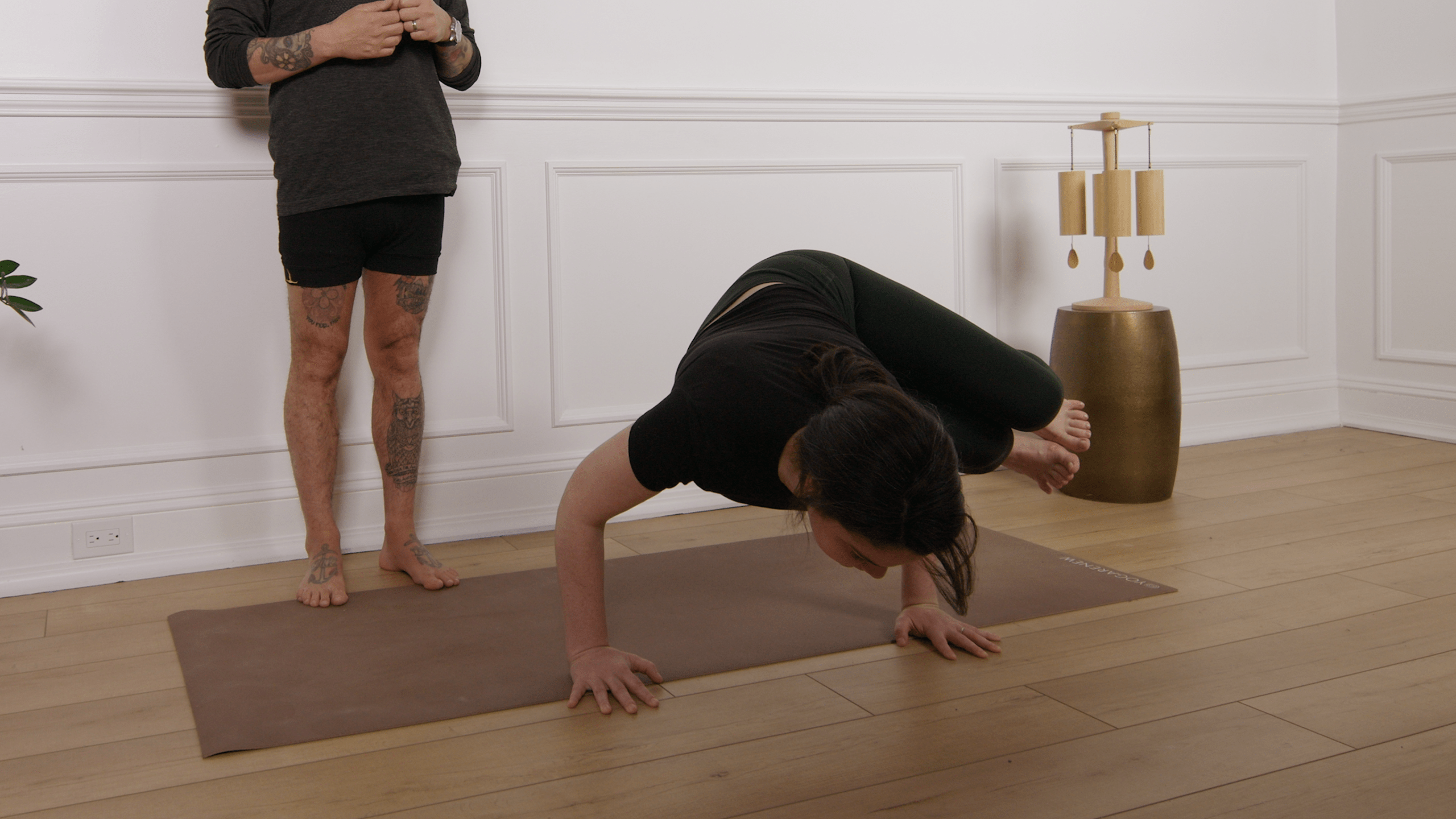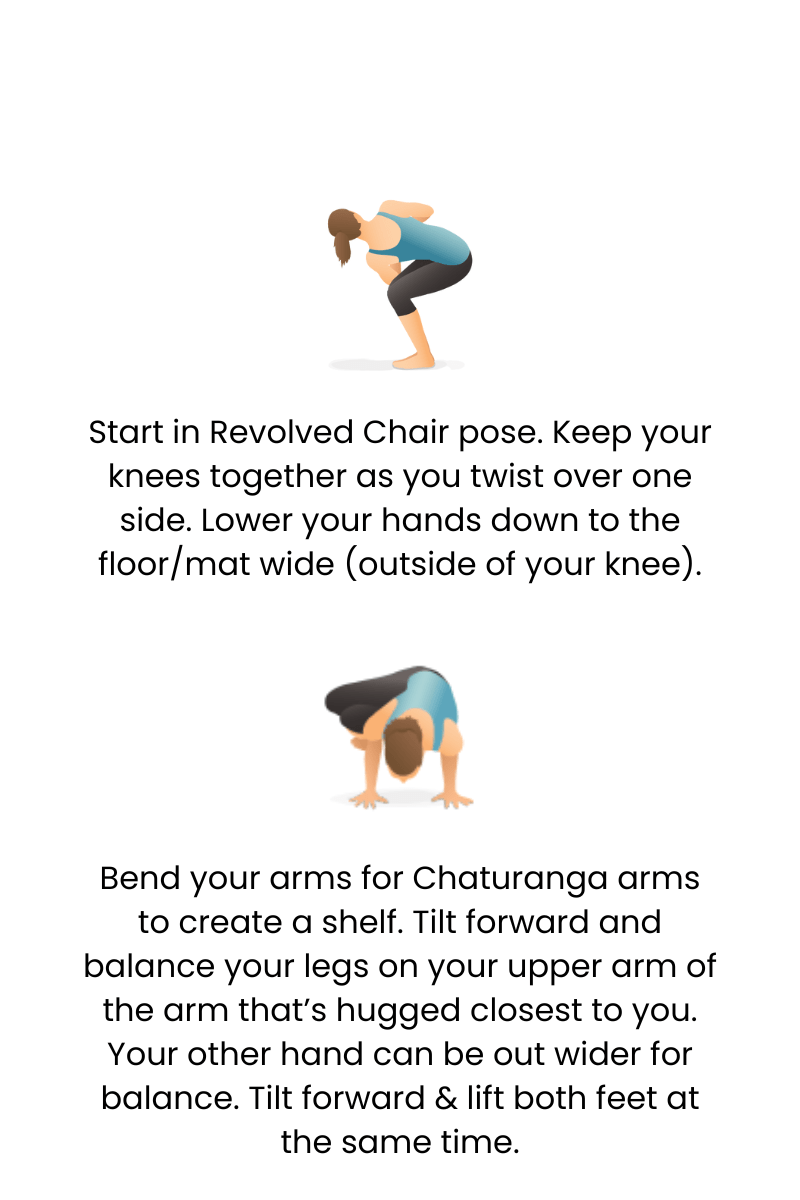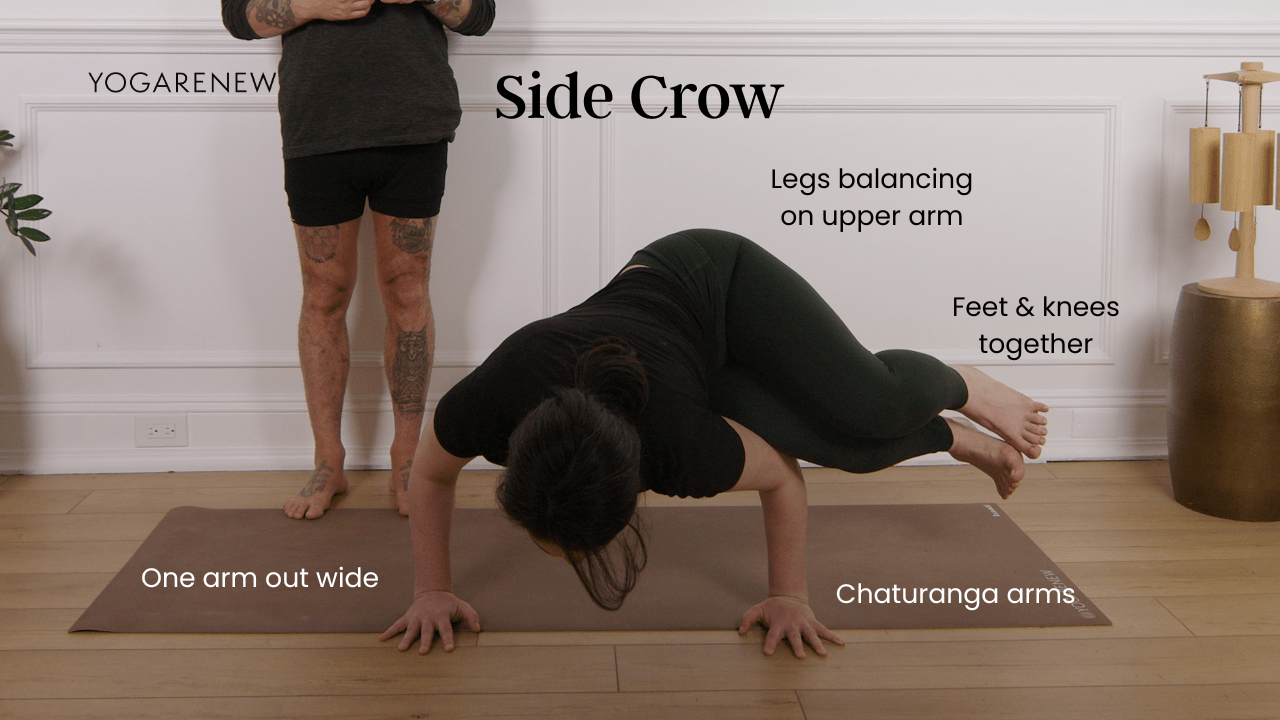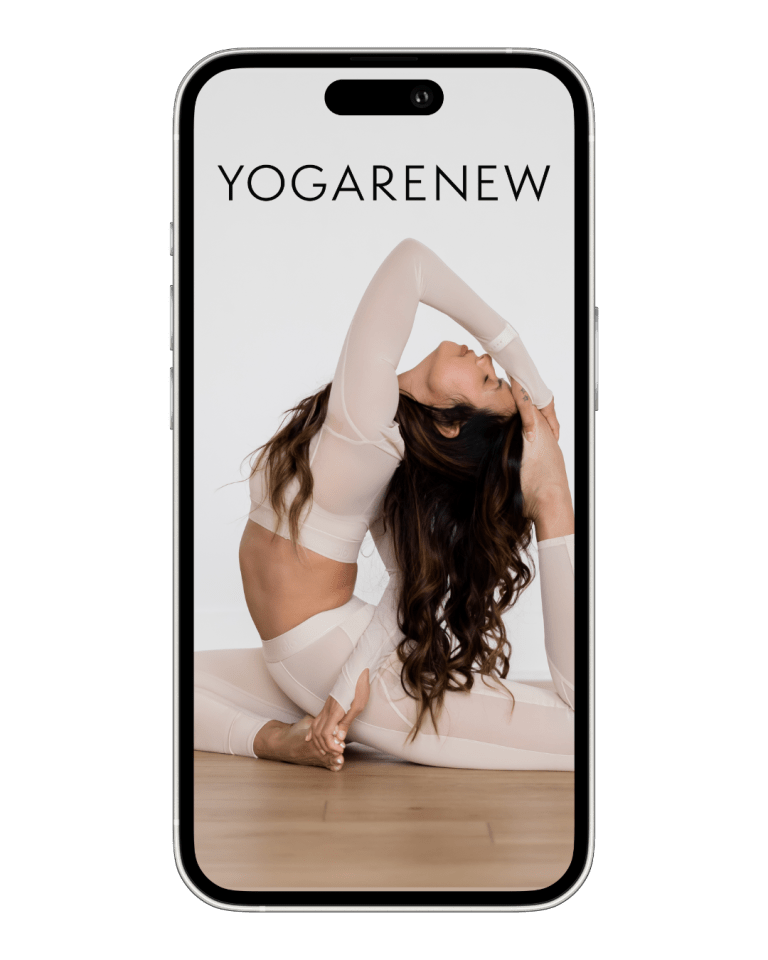What is Side Crow?
English Name: Side Crow Pose
Sanskrit Name: Parsva Bakasana (pronounced PARSH-vah bah-KAHS-uh-nuh)
Category: Arm Balance, Twist, Intermediate

English Name: Side Crow Pose
Sanskrit Name: Parsva Bakasana (pronounced PARSH-vah bah-KAHS-uh-nuh)
Category: Arm Balance, Twist, Intermediate
Side Crow, or Parsva Bakasana, is a powerful arm balance that blends spinal rotation with upper body strength and deep core engagement. A twisted variation of traditional Crow Pose (Bakasana), it challenges both balance and coordination.
This dynamic pose is often used to build body awareness and confidence, as it teaches how to integrate twisting, lifting, and stabilizing actions in a compact shape. It’s especially common in Vinyasa and Power yoga practices.


Side Crow is a pose of challenge, clarity, and control. It encourages strength through integration—blending twist, lift, and balance into one compact shape. While physically demanding, it also cultivates mental presence and trust in your own ability.
Mastering Side Crow often marks a milestone in a practitioner’s journey—it’s one of those “aha” poses that shows you what’s possible when you blend breath, alignment, and courage.
Yes, for most people. The twist and smaller base of support add complexity, but it can feel more stable with practice.
Focus on core drills (planks, boat pose), Chaturanga arms, and twisting strength from poses like Chair Twist and Revolved Crescent.
That’s totally normal. Keep practicing the setup and work on shifting weight forward while using props if needed.
No—you can use both arms for support (one for knees, one for hips), especially as you’re learning.

Explore classes & pose tutorials for any style, format, duration or experience level with a free account in the YogaRenew app. Or subscribe and gain access to workshops, live classes and more.